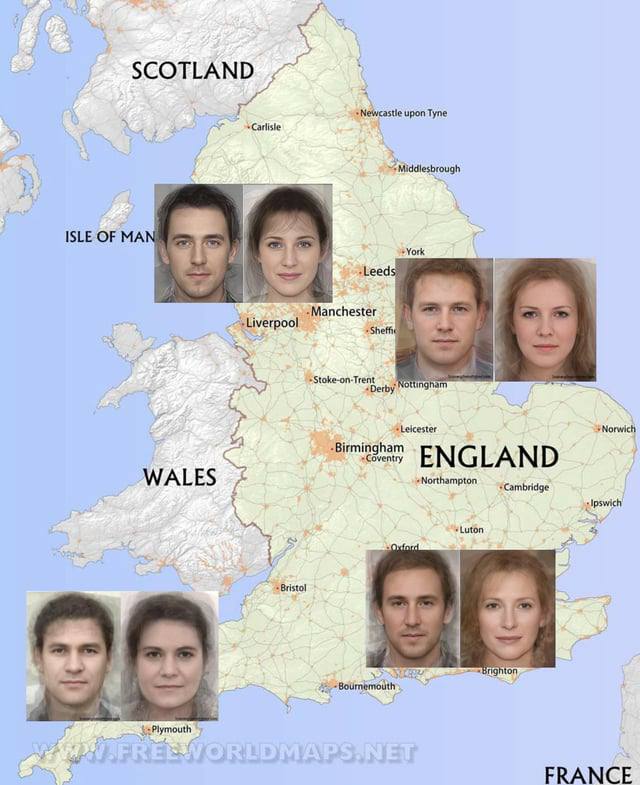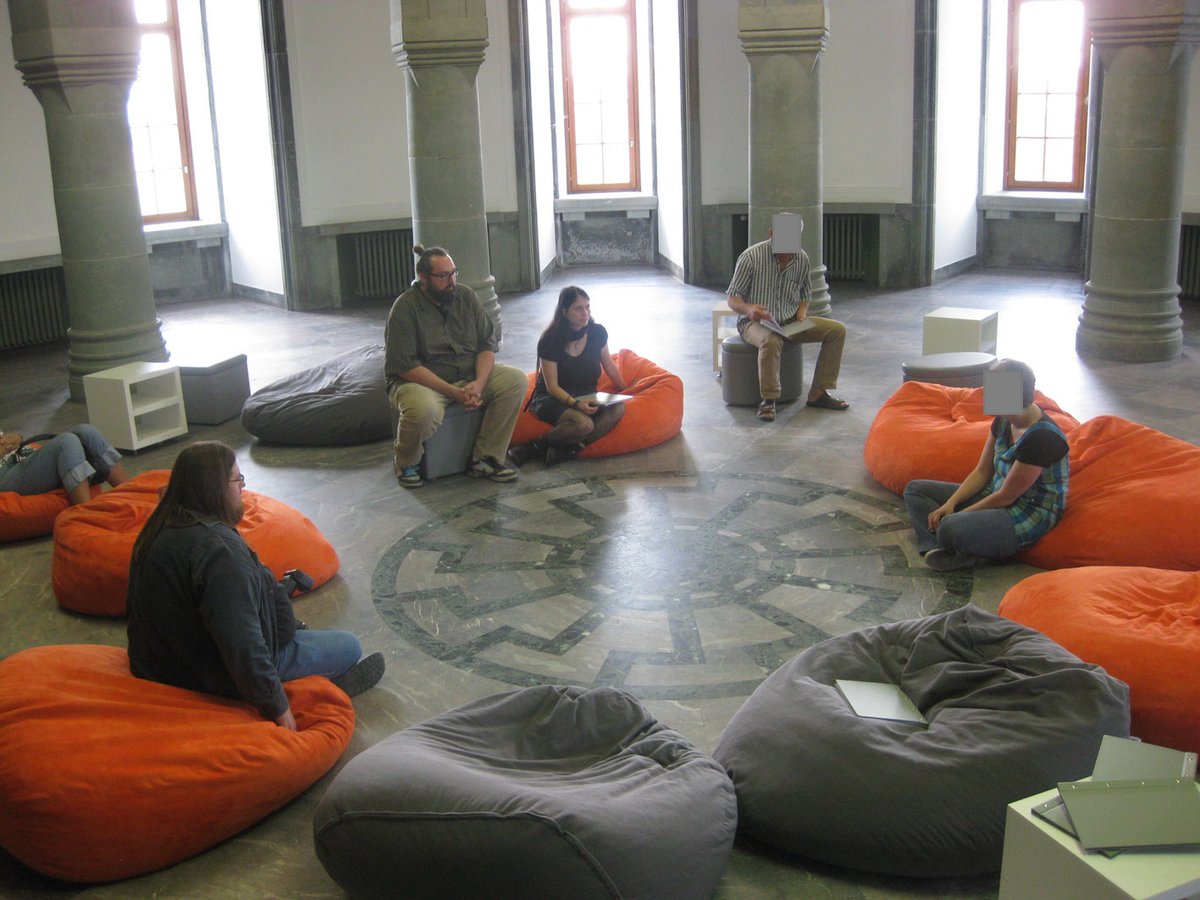Some controversy has arisen recently about the “Dark Briton” phenotype. Such people are found all over Britain and Ireland but are more common in Wales, Cornwall and Southern Ireland. In Britain prior to the 1950’s we used to refer to such people as “black” which is confusing now due to modern racial terminology. In this thread I will explain that British people have diverse phenotypes and that these swarthy people are just normal natives of the British isles.
Historically there have been a number of popular pseudo-historical explanations for these darker people. The most common was that they were descended from Spanish sailors washed ashore after the Armada sank in 1588. This is nonsense. A somewhat more plausible theory that was common among academics of the 19th century is that they are native Britons who have less Anglo-Saxon blood. 1/6 🧵
Historically there have been a number of popular pseudo-historical explanations for these darker people. The most common was that they were descended from Spanish sailors washed ashore after the Armada sank in 1588. This is nonsense. A somewhat more plausible theory that was common among academics of the 19th century is that they are native Britons who have less Anglo-Saxon blood. 1/6 🧵

While it is true that such people are more commonly found in Western regions like Cornwall and Wales (Tom Jones pictured is Welsh - the 1st map shows averaged regional phenotypes) they are also found all over the island. What’s more, many Welsh and Cornish etc are very fair with blonde hair and blue eyes. The fairest skinned people in the world live in Northern Ireland which is “Celtic”. So we cannot say the pre-Saxon Britons or Celts were all dark, and that blondism in Britain was a Germanic introduction. In fact, many Danes are dark too, so this narrative is just a crude simplification. That said, it is probably the case that the frequency of the phenotype being rarer in the East has something to do with Anglo-Saxon ancestry being higher there (pie chart map w data from Gretzinger et al 2022 shows red as Anglo-Saxon which is up to 50% in the East, compared to just 25% in Cornwall, blue = Iron Age Briton). 2/6





With the advent of the genomic revolution circa 2010, modern pop science, including my own work, has led to new kinds of folk-explanations for these people. The knowledge that the Mesolithic hunter-gatherers of Western Europe (WHG) were darker skinned, and that the next people, the first farmers of Neolithic Europe (EEF) also had Mediterranean complexions has led people to the informed assumption that darker skinned natives of Northern Europe today must therefore exhibit archaic phenotypes.
These dark WHG were thought to have been replaced by the lighter EEF in the Neolithic who in turn were replaced by the still lighter Beaker folk at the start of the Bronze Age. In reality it is more complicated than this. The chart below shows that even in the Palaeolithic light skin existed among Eastern European Hunter-Gatherers (EHG) and light eyes among WHG but the process which made these combine and become typical of Europeans occurred much later and isn't just a matter of who has the most archaic admixture. Later selection pressure played a more important role.
Art of a WHG man by @mossacannibalis
WHG woman by @beaker_the12224
3/6



These dark WHG were thought to have been replaced by the lighter EEF in the Neolithic who in turn were replaced by the still lighter Beaker folk at the start of the Bronze Age. In reality it is more complicated than this. The chart below shows that even in the Palaeolithic light skin existed among Eastern European Hunter-Gatherers (EHG) and light eyes among WHG but the process which made these combine and become typical of Europeans occurred much later and isn't just a matter of who has the most archaic admixture. Later selection pressure played a more important role.
Art of a WHG man by @mossacannibalis
WHG woman by @beaker_the12224
3/6




While it is true that the Beaker folk who invaded Britain/Ireland c. 2400 BC were generally fairer than the previous megalith building EEF people, they were not much lighter in fact. Blondism and red hair existed among the Beaker folk in lower frequencies than in modern British people. In 2016 archaeologist Maya Hoole and forensic artist Hew Morrison produced this reconstruction of a Beaker folk woman (left) from Scotland dubbed Ava. They made her fair and red-headed because this is a phenotype that certainly existed among the Beaker folk. But later a genetic analysis of Ava revealed that she was in fact darker than average for her people, and the reconstruction was updated (see right).
This year an analysis of EEF people in France (Parasayan et al 2024) showed that the first to mix with the Indo-Europeans invaders were not phenotypically distinct from their pure EEF relatives. In other words the physical differences between Neolithic Europeans and Bronze Age Europeans have been exaggerated. 4/ 6
This year an analysis of EEF people in France (Parasayan et al 2024) showed that the first to mix with the Indo-Europeans invaders were not phenotypically distinct from their pure EEF relatives. In other words the physical differences between Neolithic Europeans and Bronze Age Europeans have been exaggerated. 4/ 6

So how did white people get to be so fair? That’s a big question but the when is easier to address than the how. This figure from Patterson et al 2022 shows that across Europe the light skin pigmentation allele at rs16891982 (SLC45A2) increased significantly in two jumps, first at the start of the Bronze Age, then again in the Iron Age. Note that the increase is more significant for Britain compared to Spain/Portugal.
The study also showed that the Iron Age increase in lighter skin coincided with an increase in lactose tolerance. Even simple people can observe that Europeans get lighter as you go further North, so we can conclude that the lightening of Europeans was due to combined selection pressure relating to both climate AND diet. Something about what people were eating combined with the lack of sunlight made it essential for them to become fairer.
But the darker skinned people were never fully removed from the British genepool. They accounted for 30% of Britons in the Bronze Age while today they are much rarer. They do not descend from the Spanish at all, although they may sometimes look Spanish.
They do not necessarily have more EEF admixture, or more WHG admixture but it is generally true that they have more Iron Age British admixture relative to Anglo-Saxon.
If you want to learn more about the rise in lactose tolerance among Iron Age Britons, then please watch my documentary below. 5/6
The study also showed that the Iron Age increase in lighter skin coincided with an increase in lactose tolerance. Even simple people can observe that Europeans get lighter as you go further North, so we can conclude that the lightening of Europeans was due to combined selection pressure relating to both climate AND diet. Something about what people were eating combined with the lack of sunlight made it essential for them to become fairer.
But the darker skinned people were never fully removed from the British genepool. They accounted for 30% of Britons in the Bronze Age while today they are much rarer. They do not descend from the Spanish at all, although they may sometimes look Spanish.
They do not necessarily have more EEF admixture, or more WHG admixture but it is generally true that they have more Iron Age British admixture relative to Anglo-Saxon.
If you want to learn more about the rise in lactose tolerance among Iron Age Britons, then please watch my documentary below. 5/6

🧵 Thread over. Here is the documentary. Thanks for reading and don't assume darker British and Irish people have foreign origins based on complexion alone. 6/6
• • •
Missing some Tweet in this thread? You can try to
force a refresh






























